Millipedes are a niche pick for terrariums.
Sure, they may not be as popular as the typical isopod and springtail cleanup crew, but they definitely have potential as bioactive custodians and as pets.
It’s just important that you understand the nuances of their care and use.
In reality, they’re not going to be the optimum (or easiest) choice for every setup. So in this guide, we’ll explore the pros and cons of millipedes in terrariums, so you can figure out if they’re the best pick for you.
Let’s dig in.
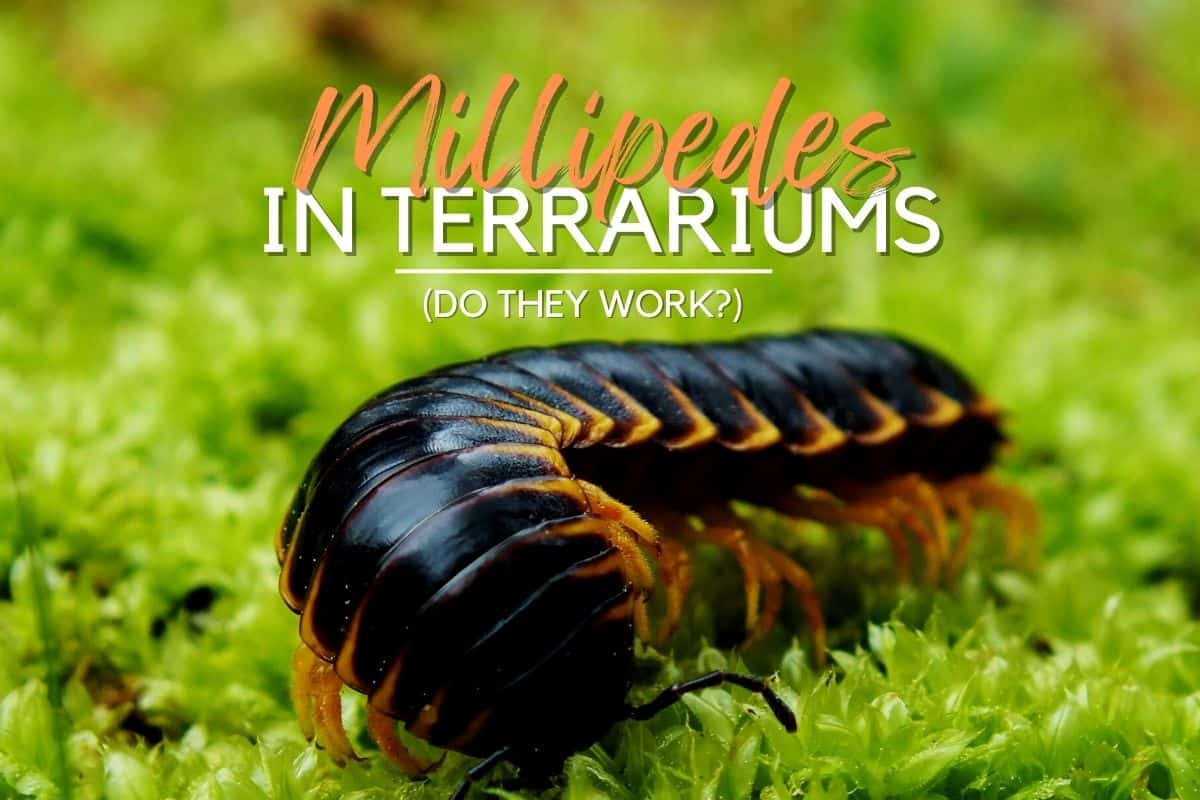
Terrarium Tribe is reader-supported. When you purchase through links on our site, we may earn an affiliate commission (at no further cost to you). 💜
Are Millipedes Good for Terrariums? (TLDR)
Millipedes can make excellent additions to terrariums.
Just like isopods, millipedes are detrivores (animals that consume decaying organic material), and they can really help with the practical side of keeping a terrarium clean and healthy.
Many species are well-suited to a tropical terrarium environment too, preferring consistent moisture and warm temperatures. Plus, they’re pretty damn cool!
So, we’re all good, right?
Well, yes, but unlike isopods and springtails, there are some potentially large caveats to using millipedes in terrariums. Depending on your use case, they may not be a good fit for you.
Pros
- Many of the tropical species are well suited to a humid terrarium environment.
- They’re good bioactive cleaners, and their burrowing nature helps to aerate the terrarium substrate.
- They’re cool pets! (And they come in a variety of bold colors and accents).
Cons
- They are less established as bioactive picks, i.e. potentially less reliable/poorly understood.
- They tend to be heavy substrate feeders, so you’ll need to refresh your terrarium mix more often.
- Can reportedly be more prone to live plant snacking vs isopods.
- They’re temperature-sensitive, so you need to be able to maintain a warm room.
- Some millipede species secrete toxins that can be harmful to terrarium animals (and to a lesser extent human handlers).
All that said, if you want a pet millipede and you’re happy to adapt to its needs, you can absolutely make it work in a terrarium!
It’s just that maybe they’re probably a niche bioactive pick for a reason? In most cases, an isopod and springtail combo would be much easier and just as effective.
Either way, for those looking to go ahead with a millipede terrarium – keep reading.
Millipede Terrarium Setup
Habitat
Millipedes need a reasonably large terrarium for a variety of reasons.
For starters, even the small ones can grow to several inches long. So they’re going to need more space than your typical isopod culture box. They also breed quickly, so they can quickly outgrow anything smaller than a shoebox.
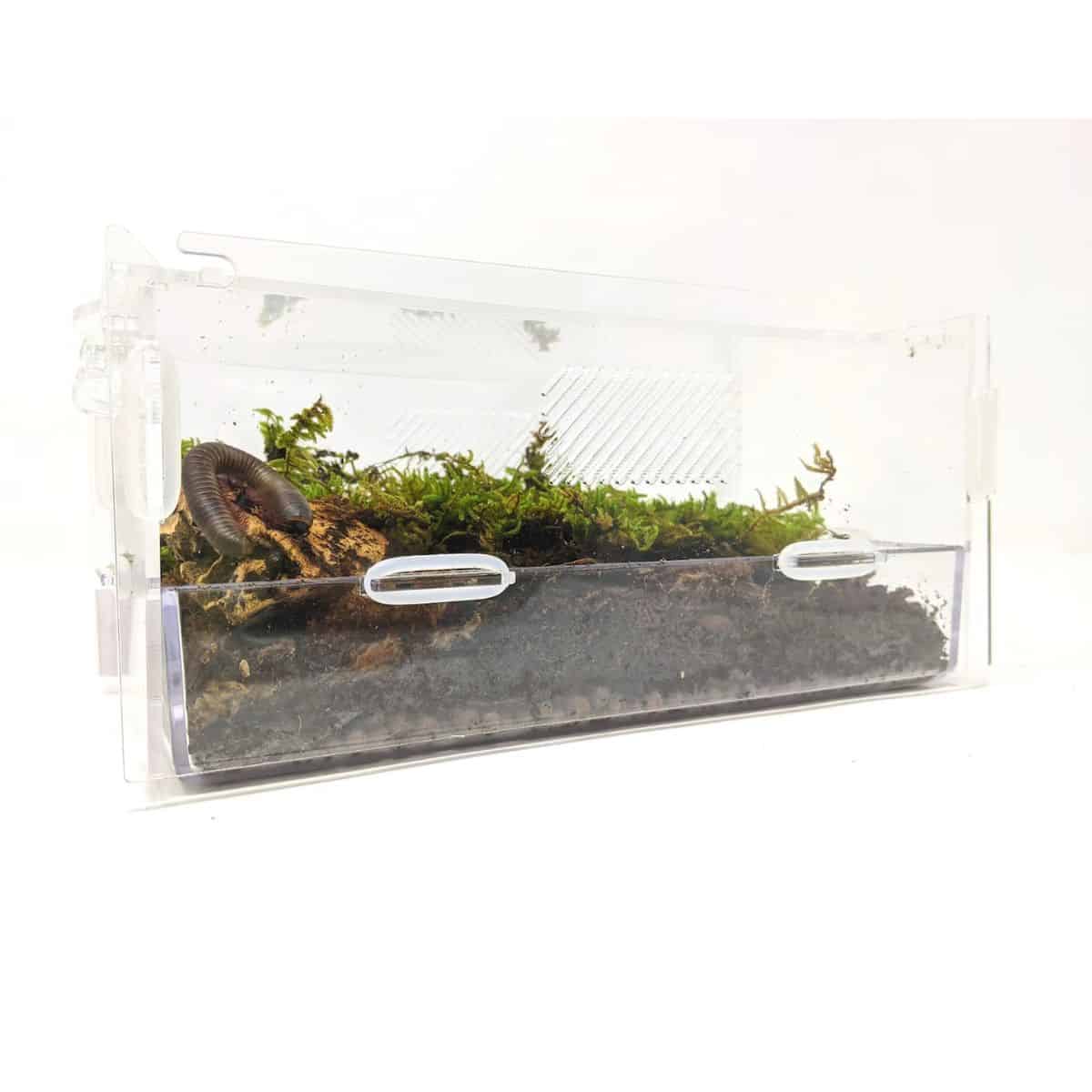
Their burrowing activities mean you need to have a substrate depth that can accommodate them. At the very least, make the substrate deeper than the full length of an adult of your chosen species. A little more certainly wouldn’t hurt!
Plus, the fact that they’re heavy substrate feeders means they’ll be actively removing substrate on a daily basis. The more substrate you start with, the less often you’ll need to refresh it.
Millipedes don’t need a ton of ventilation, and that really helps to make it easier to keep the humidity high. That said, they still need some air, so a completely sealed terrarium isn’t ideal.
I’d argue that using millipedes as bioactive cleaners in planted terrariums is much more manageable in larger tank-style terrariums.
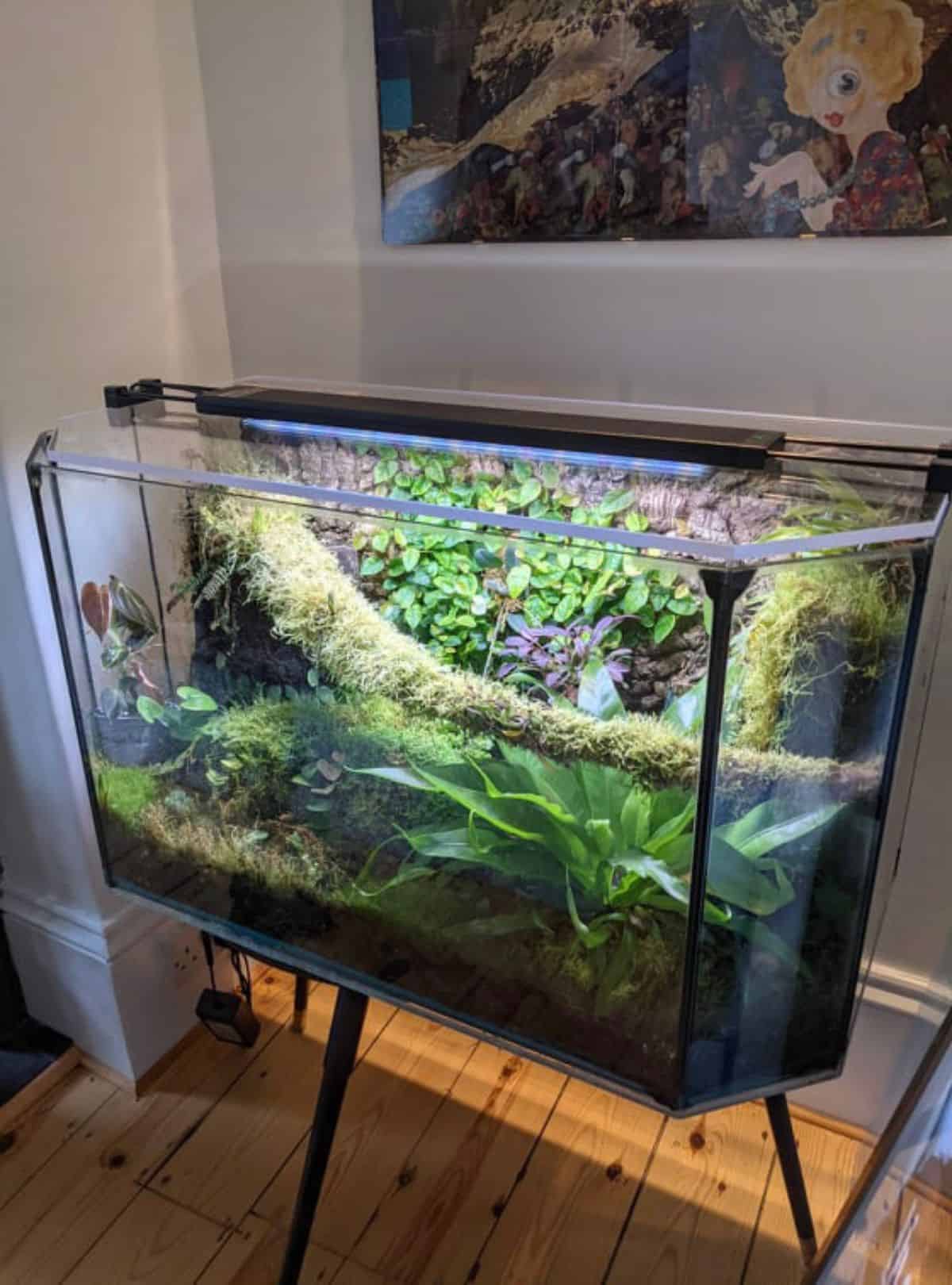
Whereas if you’re keeping them as pets, you can go a lot smaller.
Diet and Care
Millipedes are natural scavengers, and their omnivorous diet may include just about anything they can find in the wild.
However, they are primarily detrivores, so they’ll mostly target decaying organic matter in a terrarium, e.g., dropped leaves, organic substrate material, or animal waste.
Using an organic bioactive substrate mix with earthworm castings or bat guano is a good way to provide consistent nutrition (and your plants will use it for fertilizer, too). Insect frass is another option, which is why isopods and millipedes make potentially good partners.
As with isopods, you’ll want to provide some basic nutritious food options in the form of leaf litter or decaying wood. This is much easier to refresh and will hold up well in a tropical terrarium.
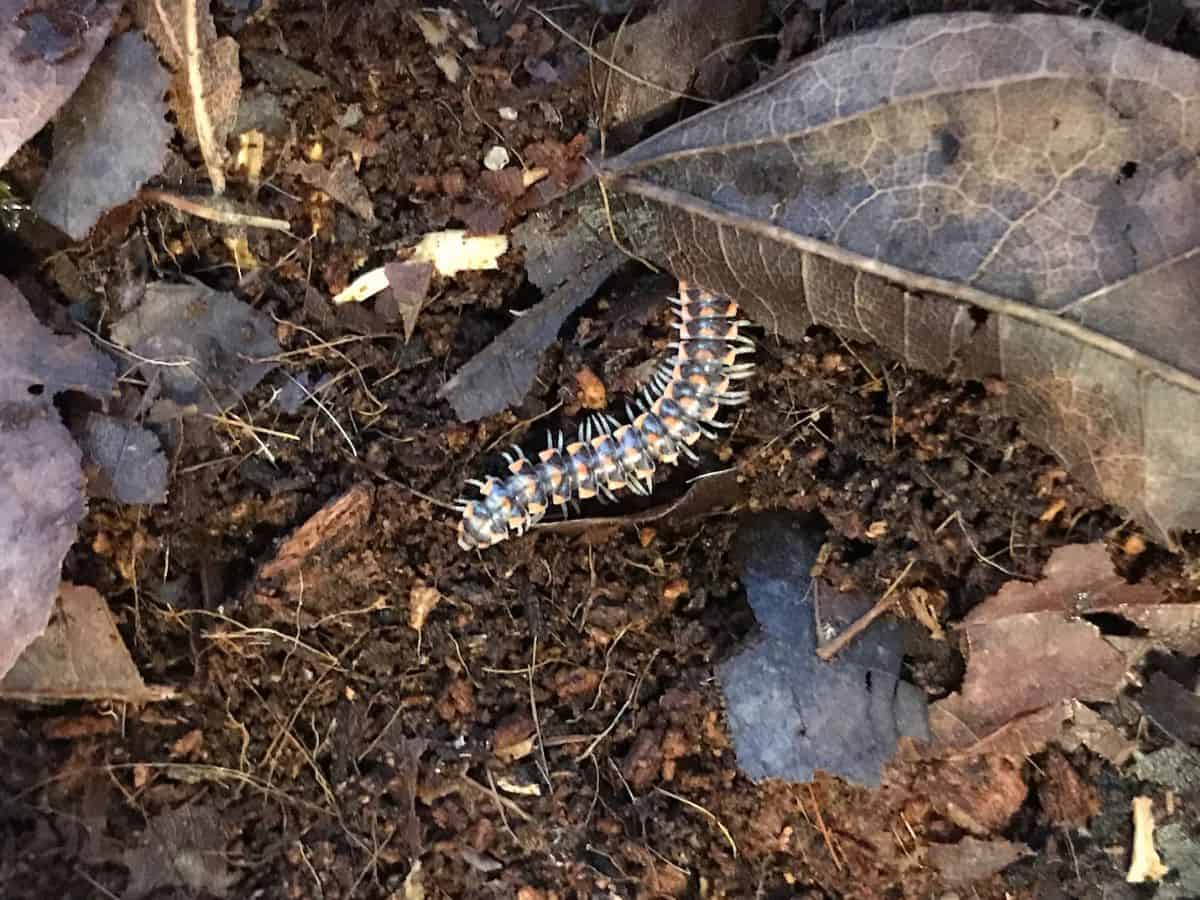
You can also supplement with vegetable and fruit scraps, but you’ll want to do so sparingly so you’re not adding too much moisture or food at a time (it’s an open invitation for pests).
Naturally, their versatile diet does mean that terrarium plants could theoretically become snack targets, but it’s (thankfully) not their preference.
According to Orkin, plants only really become a target when their habitat drys out too much. If the moisture in the plants is the real target, then it’s important to make sure their substrate stays consistently moist to prevent this from happening.
That said, keepers online have found them to target ferns and Syngonium, so bear in mind that it is possible.
Others have had success with the likes of Bromeliads and Alocasia, so maybe it’s a case of soft-leafed plants being more susceptible?
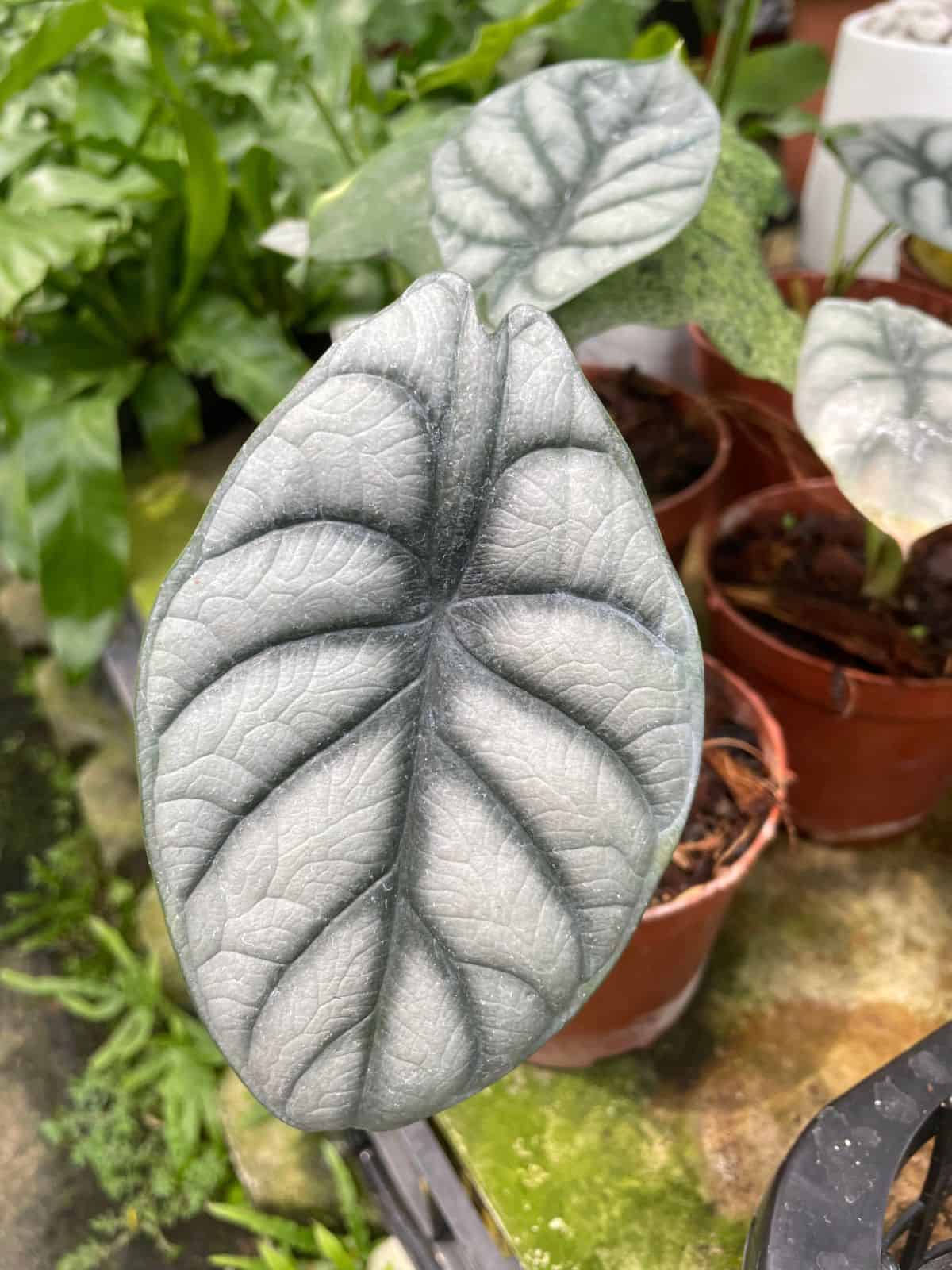
In short, maybe don’t try them out in a terrarium with plants you can’t afford to lose…
As far as terrarium conditions go, the experts at Rubber Ducky Isopods tend to aim for at least 75ºF (24ºC), but it will vary by species. Generally, at least 70% humidity, too, but the higher, the better.
The Best Millipedes for Terrariums?
Millipedes come in all sizes, from absolute giants (e.g. the appropriately named African Giant Millipede) to little critters that are the perfect terrarium size.
For beginners, the Bumblebee Millipede seems like an excellent starting point. It’s small and relatively easy to keep, so it’s a natural fit for terrariums and vivariums.
For something a little bigger, maybe something like the Crimson Millipede.
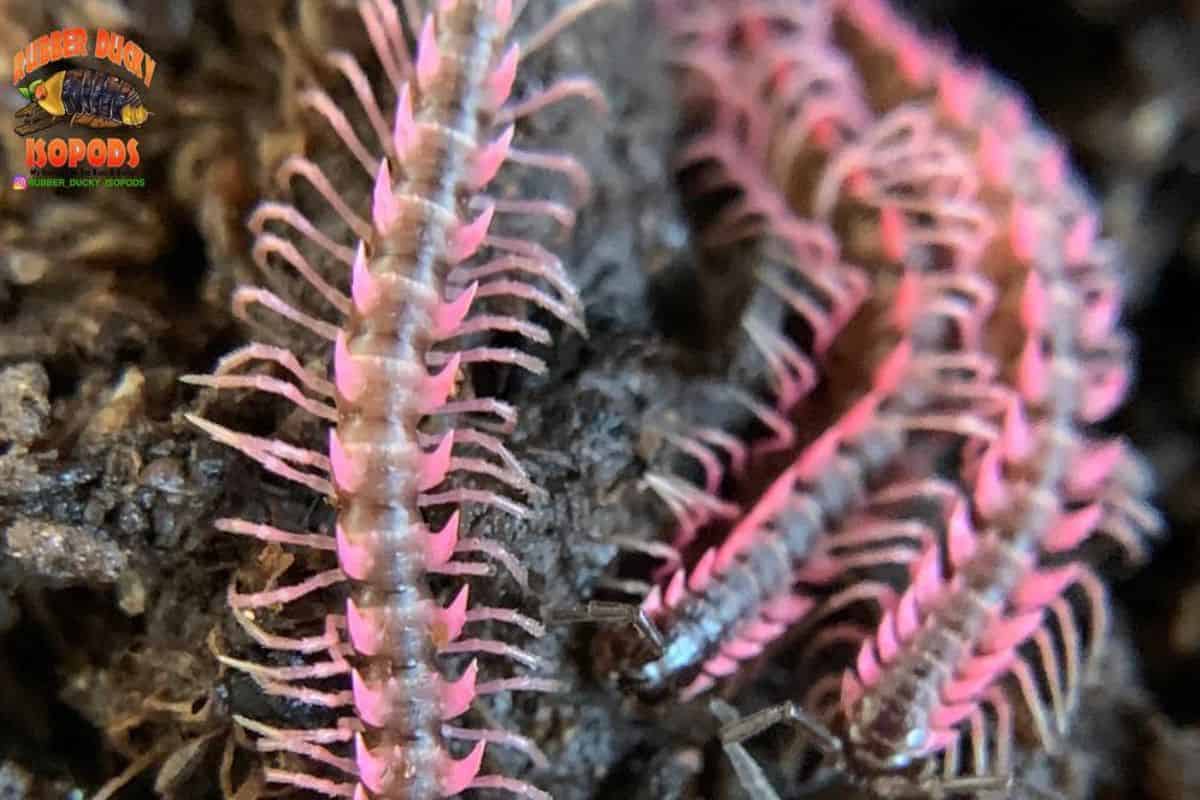
Just don’t go for centipedes, they are a very different terrarium proposition. Centipedes bite! And they might eat your other members of the bioactive cleanup crew.
That’s a Wrap
Honestly, between millipedes and the ever-increasing variety of cool-looking isopods on the market, we really are spoilt for choice!
Just check out these cool isopod species for starters!
But I do think it important that we do our due diligence on species before we make a choice for our terrarium projects – especially for millipedes.
Have you ever used millipedes in terrariums? Have they ever targeted your plants?
Let me know in the comments!

Thanks! I love the site!